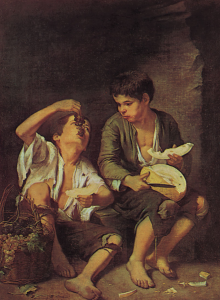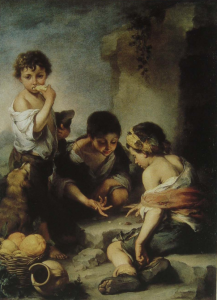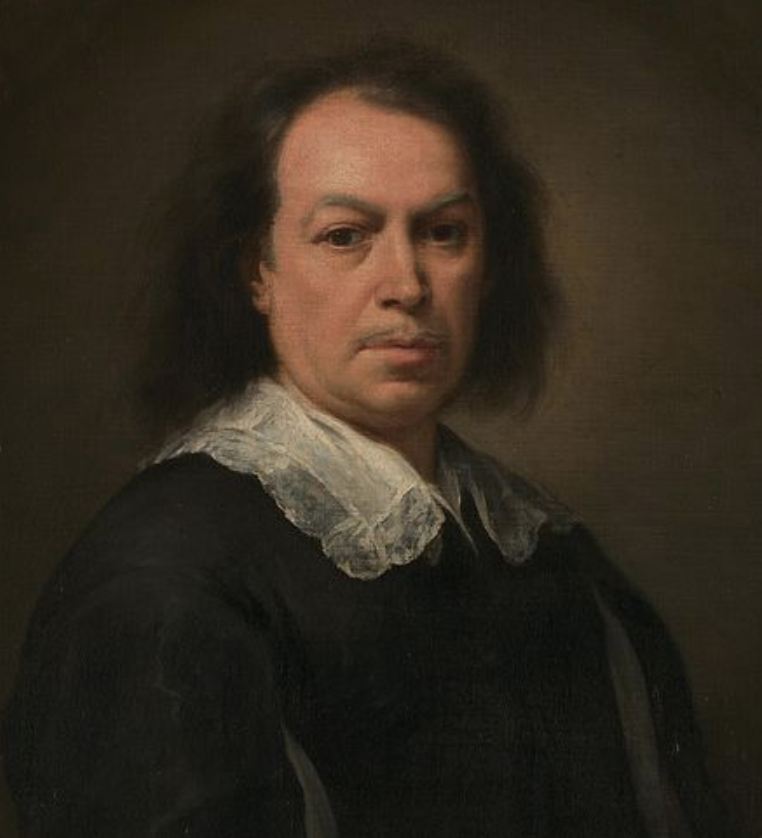Bartolomé Esteban Murillo (Baroque)

Bartolomé Esteban Murillo
Grape and Melon Eaters, c. 1645-6

Bartolomé Esteban Murillo
Street arabs, c. 1670-5
Bartolomé Esteban Murillo (c. 1618 – 1682) is known as one of the most famous Baroque painters in the 17th century. Living in Sevilla, a region with great exposure of other European artistic styles, Murillo’s painting was influenced by both Italian Mannerism and Flemish art (The Editors of Encyclopaedia Britannica). The common themes in his works are orphans and biblical figures (Wallace 2). As Murillo’s art style continued to develop, we can see a transition of his works from the High Renaissance and Mannerism style to the recognizable Baroque period style. From a side-by-side comparison of the Grape and Melon Eaters (one of his earliest works) to Street arabs (later work), we can also tell that there is a change in his use of contrast and composition (Wallace 3). The brush strokes, tonal values and figures’ gestures evidently seem richer and more polished in the Street arabs. In Murillo’s later works (after his visit of Titian, Rubens, and Van Dyck works in 1650s), we can also relate to the strong emphasis of emotions in his depicted scenes (The Editors of Encyclopaedia Britannica).The theme of evoking feels and emotions by creating a “romanticized reality” was often evident in Murillo’s personal and commissioned works. It almost feels like Murillo want viewers to relate and emphasize with the figures (especially orphans) his works.
Reference:

Leave a Reply
You must be logged in to post a comment.